|
Somedays, I write this blog at night instead of first thing in the morning. As I sit here now, for some reason it reminds of the Evening Star or the Evening Post. Not like Norman Rockwell but like some magazine or newspaper from a childhood memory. Specifically, back when I was a kid, the Washington Star newspaper had this separate fold-out tucked into the comics just for children. I can't remember the name of the little fold-out but it had puzzles, stories and history lessons about George Washington and the Supreme Court-stuff like that just for kids. Sorta like a Weekly Reader magazine but inserted into the comic section of the Sunday paper. You could count on it to be there every Sunday and then the Washington Star went out of business. I was devastated. I was heart broken. I was just about 6-years-old and already understood the importance of print newspapers long before their digital downfall. Then much to my delight, the Washington Post started carrying my little fold-out of Sunday bliss. My hobby; my ritual. Isn't it interesting how we are attracted to certain things as we grow up? Things that to other people would never matter but to you, your little world revolves around it and it brings you pure unadulterated joy. Even to the point, that 40 years later you are writing about it in a blog. The thought of its consistency and simplicity brings light to my heart and a smile to my face even now. It is so consistent and simple it is meditative. So is the the practice of writing about the memory itself. The original meditation is being 6-years-old with pencil in hand doing my "find a word" puzzles, and developing my love of polar bears and penguin by reading the blurbs. The meditation now comes from being present in this moment in time writing about the joy of my childhood ritual. So as I finish writing this blog entry tonight, I will remember to get up early and write tomorrow's blog first thing. After all, it will be Sunday morning and it will be time for my 6-year-old self to be unleashed. What simple task is meditative for you?
0 Comments
I recently took a new student workshop for my upcoming PhD program at the California Institute of Integral Studies. They were getting our juices flowing with some creative writing exercises. The hope is the development of creative writing skills ultimately leads to a well written dissertation. One exercise is particular spoke to me. An exercise in Ekphrasis (“Description” in Greek). An ekphrastic poem is a vivid description of a scene or, more commonly, a work of art. Through narrating and reflecting on the action of a painting or sculpture, the poet can expand the artwork's meaning. Some notable examples you may have read in school are Keats' “Ode on a Grecian Urn” or Carlos' "Landscape with the Fall of Icarus". So as a good workshop participant, I took a stab at it by reflecting on "Abaporu" (The Man That Eats People) painted by Tarsila do Amaral. Sun glares over cacti Skies cloudlessly bright Sits on grassy dryness Elbow rests Thoughts of consumption Tastes of emotions, souls, lives Inflammation engorges Boundary + Less How does another's act of "cannibalism" expand your thoughts on cultivating your personal boundaries?
I don't know about you but I have the tendency to over-schedule myself... teach too many classes and privates, work too much overtime, etc. I don't just sit sit and do nothing (or do something for myself just for fun). I go and go and go until I hit a wall. When I was younger, I noticed I would do this to the point of self-sabotage. So, I started to become more aware of this habit. The strategy I use that helps me NOT over-schedule and ultimately burn-out is lots of bourbon…just joking. OK...maybe just a little bourbon. Seriously, I purposely take a step back and analyze my calendar about every quarter. I look for places where I’ve overbooked myself, places where I’ve had to cancel appointments because I just did not want to “people” that day, etc. Then I make adjustments. I stop teaching certain classes (sometimes that has meant walking away from great establishments), I stop booking so many private sessions, I reduce my overtime hours at the day job, etc. My clients also benefit from my adherence to sitting down and trimming my calendar by seeing that they too don't have to do everything and be everywhere. Instead of spreading myself too thin, I can be truly present. "Time is what we want most, but what we use worst"-William Penn This past weekend marked the end of a journey for me. I finally completed my Master of Science in Yoga Therapy (OOKKK…I still have one assignment to turn in but the classwork and clinics are done!!). A year ago, before we started our clinical rotation, we were asked to write a letter of encouragement to ourselves from our future selves. After we wrote it, we were to save it and read it when we completed clinic. Here’s what I wrote: To: Me You got this! Be patient with yourself. It will all come in time. Enjoy the learning process. Enjoy the people you become friends with. Always show respect and love for your instructors. You will always be learning and growing. This was the path you were meant to be on-Don’t forget that and don’t get discouraged. This will be a transformative year for you. Always remember that your clients/students will teach you more about yourself than you will ever teach them. Enjoy the ride-It’s all about the journey. From: Me P.S. My word of intention for the year: Adventure!! Damn!! My future self was one smart cookie. I think I should listen to her more often. To me as a yoga therapist, the most important part of my work is how I ask questions. Everyone has been to a medical or wellness provider-allopathic, holistic, whatever-that either doesn’t pay attention to your answers after a question has been posed or just doesn’t bother to ask you anything in the first place. Everyone hates that!
What does this all lead to? You not going back to that practitioner. You not following through with the recommendations, guidance, needed medical attention, etc. All of which is not in your best interest. …Because why bother! They don’t care. They didn’t hear a word I said. They just wanted my money. They are in cahoots with big pharma. ETC. ETC. We have all had this conversation in our minds. My goal as a yoga therapist is for my clients never to feel this way. I want them to feel heard. Truly listening and hearing someone=Empathy! Specifically in Yoga Therapy, we use the Panchamaya Kosha Model. The Panchamaya Kosha Model suggests that the human system is interconnected and functions optimally when there is a state of balance between the Koshas (layers). The five Koshas (layers) are physical, energy/breath, mental/emotional, wisdom/intuition and bliss layers. By applying this model, a yoga therapist can provide support for a client’s physical, emotional and mental well-being. I intentionally frame the conversation with my clients around the Koshas so that they feel heard, seen and partnered with.
Some Examples of my Questions: Annamaya (Physical) 1. On your intake, you mention tightness in your shoulders. Can you describe what you are feeling? 2. On a pain scale of 1-10, how are your knees feeling today? 3. Compared to the average day, is your pain better or worse (scale of 1-10) today? 4. Does the range of motion in your shoulder impact your daily activities? How? What are those limitations? 5. As a yogi, are there any asana(s) that cause you pain? What are those poses and where is the pain? 6. How does your arthritis affect your knees? Stiffness, range of motion limited, etc.? 7. Do you notice certain things trigger tightness in your shoulders and neck? Stress, overexertion, etc.? 8. Does your pain or discomfort prevent you from certain life activities? What kind? Do you use work arounds, just don’t do the activity, have someone else do it for you, etc.? 9. When you are standing in tree pose, do you notice anything about the posture? How does your standing leg feel? Your shoulders? Etc.? 10. When you are in plank pose, do you feel the muscle in your back activating? Where? Pranayama (Energy/Breath) 1. Where do you feel the breath? In your chest, ribs, abdomen, all? 2. How restful is your sleep? Do you wake throughout the night or sleep the entire time? 3. Do you feel rested when you wake up? All the time, sometimes, never. Does it affect the rest of the day? 4. Do you ever experience the afternoon slump? How often? What do you do to remedy it (such as coffee, etc.)? 5. How would you rate your stress levels (scale of 1-10)? 6. What causes you stress? What are your triggers? How does the stress make you feel (anxious, lethargic, etc.)? 7. Do you have any go-to activities for helping with stress? What are they? How often do you do them? 8. On the average, how would you describe your energy level? How does that compare to today’s energy level? 9. When you stated you had difficulty starting certain activities, can you describe to me what that means to you? 10. How would you describe the quality of your breathing? Manomaya (Mental/Emotional) 1. You mentioned poor concentration, how would you describe it? When does it occur? 2. When do you feel anxious? What are some of the things that create anxiety for you? 3. What does “overwhelm” feel like to you? Does it have a color, texture, etc.? 4. Where in your body do you experience anxiety? 5. In your intake you mention poor memory, how has that manifested in your daily activities? 6. When you have difficulty making decisions, how does that impact you? 7. How does stress manifest in your body or breath? Do you notice it in certain parts of the body? 8. What do you do to relive stress and anxiety? How often? 9. How do you show yourself self-compassion? What do you do to nurture emotional health? 10. How would you describe the quality of your support network? How satisfied are you with the quality of your relationships? Vijnanamaya (Wisdom/Intuition) 1. How would you describe your true nature? 2. How could you reframe stress to lessen its impact? 3. How could you transform anxiety so that it works for you? 4. How content are you? How could you cultivate contentment? 5. What are some tools you use to ground and center yourself? 6. How does reframing stress into something helpful look to you? 7. What brings you discontentment? Why? 8. If you stripped all the layers, what does your true nature “look” like? 9. How does contentment feel in your body? Texture, Sounds, Smells, Visuals, etc. 10. What tools could you utilize to bring the sense of contentment into your daily life? Anandamaya (Bliss) 1. What brings you joy? How? 2. Do you cultivate joy internally? How? 3. How do you cultivate overall well-being? 4. What inspires awe for you? Why? 5. What is an inner resource (memory, visualization, etc.) that connects you to your true nature? How does it appear to you? 6. What is your sankalpa (your intention or vow to yourself)? How can you manifest it in daily life? 7. Do you have a connection to something greater than yourself? How does that manifest in your life? 8. How do you relate to the word “hope”? What feelings does it create? 9. What does “connection” mean for you? 10. What gives you meaning? What questions would you ask? How would you feel if a practitioner framed the interaction in this manner? I recently learned that Body Fat (Adipose Tissue) is an endocrine organ and actually has more impact on the body than the thyroid gland. Therefore, too much adipose tissue (obesity) can lead to diabetes. Obesity increases the risk of developing Type 2 diabetes, high blood pressure, and high cholesterol as well as contributes to the risk for heart attacks and strokes. So what yoga therapy tools work great for the management of diabetes? I recommend these 3 yoga therapy tools: 1. After a few rounds of natural breathing, begin Ujjayi breathing. While your breathing, some food for thought-How Tapas (effort) is balanced with Santosha (contentment). Tapas can bring about change like improved health and lower blood sugar levels. While Santosha brings peace in the current circumstances. Always remember the importance listening to the doctor regarding nutrition and monitoring insulin levels. (5-10 minutes) 2. A short series of asanas to develop an exercise habit that can help with obesity, heart issues, high blood pressure, and metabolic syndrome. Also , these practices can help lead to improved mood potentially leading to lifestyle changes and improved quality of life. Always watch for any dizziness with the increased movement. (30 minutes) Sample Asanas: • 10 ½ Sun Salutations: The Sun Salutations can be completed as slow as necessary or even use a chair. • Warrior I: Warrior I (lower body) with goal post arms. Transition to straight legs and Warrior I (straight) arms. Repeat 5 times per side with an extended hold at the end (3 counts/breaths). You can also do this posture in a chair if needed. • Seated Spinal Twist: Depending on our flexibility, the opposite leg can be bent or straight as well as accomplished with deer legs or from easy pose. • Seated Forward Fold: Finally, transition to a seated forward fold to begin the activation of the parasympathetic nervous system. 3. Savasana: Practice a relaxation pose of choice and begin breathing with an extended exhale. You can also use a guided visualization of your peaceful place to continue the activation of the parasympathetic nervous system. (10 minutes) Yoga can be incorporated into your daily life and have positive impacts on glycemic control. Studies suggest that yoga has a direct impact on psychoneuro-endocrine and immune mechanisms as well as contributes to parasympathetic activation and anti-stress mechanisms. This all leads to improvement in overall metabolic and psychological profiles, increases in insulin sensitivity, and improvements in glucose tolerance and lipid metabolism. In addition to the practices listed above, yoga practices utilized in the management of diabetes often include cleansing exercises, and the use of bandhas, meditation, relaxation, chanting, Yoga Nidra, or mudras. These practices can reduce blood glucose levels as well as contribute to the management of co-morbidities. What yoga practices will you incorporate in your fight against diabetes? Raveendran, A. V., Deshpandae, A., & Joshi, S. R. (2018). Therapeutic Role of Yoga in Type 2 Diabetes. Endocrinology and metabolism (Seoul, Korea), 33(3), 307–317. https://doi.org/10.3803/EnM.2018.33.3.307 If you know anything about me yet, it is that I'm a lover of Pranayama or yogic breathing. As many posts as I have written about the benefits of Pranayama and how to actually perform various types of Pranayama, I don't think I have ever laid out the basics. The word Pranayama is a Sanskrit compound and it has been defined in numerous ways by different authors/commentators/etc.
I personally view Pranayama as the expansion of the breath and individual energy (life force) into the larger interconnected cosmic universe. When we work with our breath, we gain access to our life force energy. Pranayama is the access point to the subtler aspects of yoga as well as being tremendously helpful in developing body awareness, mindfulness, focus and stamina. Mainstream society is now discovering the benefits of pranayama, or yogic breathing exercises. The various types of Pranayama are accessible to the most beginner students, even those whose physical impairments and injuries prevent most asanas (yoga postures). Whether you are a beginner or advanced yogi, you will find Pranayama to be a powerful tool to help you on your yogic journey. How to Practice Pranayama 1. Clothing: Clothing should be loose, especially around the abdomen, to ensure the diaphragm is not impeded. 2. Diet: Do not eat heavy meals at least 2-3 hours prior to practicing Pranayama. 3. Time: Dawn is a terrific time to practice yoga and meditation as well as Pranayama because the early morning air is fresh and contains the most amount of Prana (life force). Of course, if this is not feasible, no worries, practice when you can. 4. Posture: Always sit with your back as straight if possible. In addition, keep the chin slightly tucked so that the back of the neck is aligned with the spine. This will help the flow of energy up and down the spine. 5. Illness: Do not practice any advanced Pranayama techniques while ill. Do the easier breathing exercises. It is also fine to stop entirely until you have recovered fully. 6. Effort: Do not strain. Progression should be gentle and systematic. This is even more applicable for any Pranayama that requires you to hold your breath for prolonged periods. If you feel uncomfortable while practicing a Pranayama, stop, take a break and restart again when you feel ready. 7. Cautions: Do not practice any heat generating Pranayama while sitting directly in the sun. This can aggravate the heat in the system (pitta). Similarly, choose Pranayama according to physical conditions and state of your health. 8. Location: Try to practice in a well-ventilated room with plenty of fresh air. How will you practice your Pranayama today? Do you have any helpful tips that make your Pranayama practice more consistent? "There is a vitality, a life force, an energy, a quickening that is translated through you into action, and because there is only one of you in all of time, this expression is unique. "-Martha Graham There are several types of breathing that can be unhealthy. Yoga, as we all know, can help us break these habits. Yoga can retrain our brain and body to get us off the hamster wheel of the most common unhelpful breathing practices: hyperventilation, reverse breathing, collapsed breathing and frozen breathing. Hyperventilation is the act of breathing quickly no matter what we are doing. It’s not just when we are scared, frighted or upset like in the movies. It can be a breathing pattern we do continually every minute of every day. In hyperventilation, you will chest breath and only partially contract the diaphragm. Thus, reducing the space the lungs have to expand. This results in you having to increase the number of breaths per minute to get enough oxygen and, ultimately, increases the amount of carbon dioxide lost on the exhale making the body too alkaline. Hyperventilation makes the arteries in the brain constrict causing headaches and problems with concentration. Also due to the reduced oxygen levels, the blood’s hemoglobin does not release oxygen to the cells (causing dizziness, and breathlessness) and perpetuates the hyperventilation pattern. Additionally, hyperventilation causes constriction of the arteries reducing blood flow to the extremities, increases calcium levels causing muscle tension, and increases the excitability of the nervous system causing irritability, overreacting, and inappropriate responses. It has also been documented that hyperventilation causes nightmares, insomnia, visual disturbances, anxiety, and muscle cramps, just to name a few. Reverse breathing is when your abdomen moves ‘in” on the inhale and moves “out” on the exhale. Your pelvic floor movement is also reversed meaning the pelvic floor “closes” (rises) on the inhale and “opens” (lowers) on the exhale. The reversal can cause chronic tension in your upper body including the neck, shoulders and jaw areas. Reverse breathing also causes indigestion, heartburn, bloating, and flatulence due to the abdomen never fully relaxing at any stage of breathing. Collapsed breathing is chest breathing with your whole body moving downward. Your chest draws downward, your shoulders are hunched protectively, and your belly is projected forward and down. Typically, collapsed breathers have little tone in their lower body (muscles and organs) with the heart and lungs resting down on their belly. While breathing, your belly will remain static, and your chest and shoulders rise up and down slightly. Finally, frozen breathing is when the entire outer layer of your body contracts. This contraction suppresses the natural movement of your breath. Very little movement is seen on the surface of the body in frozen breathing. Your shoulders will typically draw toward each other, and you will hold your breath. What To Do... A yoga practice that can address all four breathing challenges is to lay on the floor in a supine position and start to notice where you breath. Donna Farhi’s “Where Do I Breathe?” practice is an excellent method to begin the learn exactly where in the body you are breathing and to become more aware or mindful of those breathing patterns. Here's how to start (for more in-depth exploration I recommend Farhi's The Breathing Book):
After you develop this awareness, you can try three-part breathing to access all the parts of your lungs. Three-part breathing can also start in a supine position so you can focus on the breathing aspects and not on having good posture.
Once you feel comfortable supine, you can try three-part breathing in a seated position with more focus on posture to prevent collapsing of the shoulders and chest. Additionally, you can incorporate a guided visualization to help cultivate mindful breathing, the slowing down of the breath, and a deepening of the inhales. Likewise, you may want to try a meditation practice on loving-kindness or ahimsa to address any unresolved mental or spiritual traumas that may be leading to poor breathing habits. Farhi, D. (1996). The Breathing Book: Good Health and Vitality Through Essential Breath Work. St. Martin's Griffin, New York. "A habit cannot be tossed out the window; it must be coaxed down the stairs a step at a time."-Mark Twain According to the Journal of the American Medical Association, it is estimated that 60 to 80 percent of visits to the doctor are stress-related but rarely do doctors talk to their patients about how to reduce stress. This statistic really hit home for me recently. My dad just had a triple by-pass at 81 years old. You want to talk about my stress levels shooting out of the roof-HOLY SMOKES!!! By his fifth day in ICU, I came home and collapsed on my couch at which point my husband said, “What’s wrong with you? Why are you breathing that way?” To be honest, I hadn’t even noticed how I was breathing. So, I paused and said, “Just relieving some stress.” In reality and totally subconsciously, I was doing Ujjayi breathing (aka "ocean breath"). From all my years of being a yogi, I naturally defaulted to breathing to reduce my stress. A fundamental principle of yoga is that our body and mind are connected. Breathing is key to this connection with your body. Yogic breathing also trains your parasympathetic nervous system. It helps your stress hormone levels to drop and your heart rate variability to increase (a measure of your ability to tolerate stress). The Next Time You Feel Stressed Try Ujjayi Breathing for Yourself Take a deep slow breath through your nose and exhale through your nose while constricting the back of your throat (keep your mouth closed). Your breath will probably be loud enough that you can hear it and will sound like the waves of the ocean or like Darth Vader from Star Wars. As yoga instructors or yoga therapists, we often use Yoga Nidra or meditation “scripts”. And just like you, I too find some of the wording cumbersome and I stumble quite often over the language. There are certain scripts that resonant with me like those created by iRest experts but even those don’t roll off my tongue naturally. I like language that is clear and concise. Language that is easy to understand and that anyone participating in my classes can relate to and gain benefit. I steer away from loaded language and use more Western terminology in my group meditation and Yoga Nidra classes since some students are not coming to class for spiritual or philosophical reasons-they just might be trying to sleep better at night. A good way to find out how you sound reading one of these pre-written scripts is to record yourself. It will help you develop an authentic voice as a yoga instructor and/or therapist. You’ll instantly pick up on those parts of the language that sound “fake”. You know those parts..."like there is no way in the world I would normally talk like that." So what do I do? I change it up! Some Common Script Language and How I Change It
What are some ways you, as a yoga instructor, change language to be more authentic? As a student, what language have you heard an instructor use that sounded odd? Relaxation is one of the single most important activities you can partake in to optimize pelvic floor health. Relaxation allows you to tap into interoception-that ability to sense and feel what is happening in your body. So, what is happening in your body when you breath? The anatomy and function of your pelvic diaphragm is directly linked to the anatomy and function of your respiratory diaphragm. When you inhale, as your lungs fill with air, your respiratory diaphragm descends and presses down onto your abdominal cavity which, in turn, presses onto your pelvic diaphragm. When you exhale, the two diaphragms return to their neutral upward position. Diaphragmatic breathing not only activates the parasympathetic nervous system and the relaxation response, but it creates this movement naturally. Diaphragmatic Breathing=A Healthy Pelvic Floor Let’s Try It! • Lying in on your back with your knees bent and feet on the floor, place one hand on your belly (just below your ribcage) and one hand on your chest. Begin to take long, slow, breaths which cause your belly to rise. However, your chest should remain still. • You can start with equal breaths-for example, a count of 4 on the inhale and a count of 4 on the exhale. When you are comfortable, you can begin to lengthen the inhales and exhales. • As you exhale, gently tighten your abdominal muscles and let them fall inward. The hand on your belly should move down to its original position. You’ll notice the subtle sensation as the pelvic floor contracts (not as intense as contracting to holding in urine). Keep your pelvic floor healthy! Try to incorporate a little Diaphragmatic Breathing into your daily yoga practice. "May your jeans, pelvic floor, thoughts, and days off be relaxed."-Pelvic Guru According to Donna Farhi, “Countertransference refers to the way a student, client or patient may evoke repressed feelings on the part of the teacher, therapist or doctor”. By being aware of the countertransference, it enables the yoga therapist to create and maintain better boundaries as well as develop tools to contain feelings so not to destabilize the client-therapist relationship. Trust me-this is easier said than done. I am always working on this aspect of the client/therapist relationship. I openly admit, I struggle with perfectionism making the most prominent feeling a client can evoke in me--accountability. In my professional and personal life, I am always prepared and hold myself to a high standard especially if I commit to do something for another person. I equate this trait to respect for and towards others. So, when a client lacks what I would call accountability or respect, it makes me soooo angry. I’m also greatly disappointed in and saddened by someone I thought was reliable and trustworthy as if I really know that client on a personal level. I have to remind myself-I’m the yoga therapist and I don’t know anything more about the client than what he/she/they tell me. The client/therapist relationship is not personal. So, I endeavor to remain professional at all times and try diligently not put my moral/value/ethical system on others or cling to expectations of others that I have no control over. Like I said…easier said than done!! You don’t have to be a yoga therapist to know how hard this is—we experience this same clinging to expectations in everyday life. Do you hold on a little too tightly to certain aspects of yourself, your life or others? Is it possible to let go of expectations? How Do I Work on Letting Go Expectations? I go back to the Yoga Sutras and, in particular, the last Yama …Aparigraha (non-attachment). This enables me to let go of my expectations of others since it only creates suffering for me. Here’s are some ways to cultivate Aparigraha:
What tools can you put in place to steady yourself when attachment and clinging raise their ugly head? Farhi, D. (2006). Teaching Yoga: Exploring the Teacher-Student Relationship. Rodmell Press. Swami Satchidananda was once asked by a student, “There are times when I feel very deep loneliness that no friend, family member or lover can seem to satisfy. Do you ever get lonely like that?” Satchidananda replied, “If you depend on anything or anybody outside you to be a companion, it is impossible to have that companion always with you. Even if another person wants to be with you always, he or she cannot. We come alone, and we go alone. Don’t depend on outside company. Even as you are coming and going, there is always another there—your own spirit, your own Self or the God within you.” When we rely on things, people, or experiences outside of ourselves to make us happy, we are seting ourselves up for failure. True equanimity comes from being independent of the comings and goings of the outside world. The minute we cling to something or someone we create little mind fluctuations that cause suffering. The key to gaining control over those fluctuations is to understand what lies underneath those thoughts. Our thoughts may be pure, positive, and virtuous, and move us toward enlightenment. Or, as is the case for most of us mere mortals, our thoughts can impede our path toward enlightenment by creating a mental field of suffering caused by the Kleshas (obstacles or afflictions of the mind). So What Are The Kleshas? The five Kleshas are:
Some of the Kleshas afflict us on a daily basis at a subtle level and others can be overwhelming and cause great suffering. The Kleshas stop us from fully enjoying life, from being truly present in the now, and from having a sense of freedom. Unlike pain—an uncomfortable physical, mental, or emotional experience—suffering is the state of being caught up in your situation and identifying with it as an aspect of your being. Therefore, pain is inevitable, but suffering is optional. All of human suffering can be attributed to one of the five Kleshas. All causes of suffering are contained within the first Klesha (Avidya). When you remember your true identity as pure spirit (and not as the physical body):
How Do We Overcome the Kleshas? This is where meditation comes in. In meditation, the mind can be fixed on one thought. That concentration on one thought or one point literally transforms the mind by allowing it to flow undisturbed from thought to thought. Once the mechanism that produces the detrimental, harmful or damaging activities of the mind is eliminated, your thoughts are no longer afflicted. The underlying obstacles, the Kleshas, are removed and we realize our true nature. To transcend the first Klesha and, thus, the remaining four, the Yoga Sutras give this guidance. Sutra 2.10 states, “In their subtle form, these obstacles can be destroyed by resolving them back into their original cause.” This means if we eradicate the first Klesha (Avidya) we can become self-realized/liberated. Through yoga the Kleshas become less and less active until they reach the subtle form. However, remember even the subtle form can be triggered back to the active state-think about all the fallen gurus in recent memory whose Kleshas came back roaring. Sutra 2.11 states, “In the active state, they can be destroyed by meditation.” Think of it this way-Sutra 2.10 is for the already “advanced” meditating yogi and Sutra 2.11 is for the rest of us-the yogis that are embarking on the path to liberation. Meditation is moving away from a life of suffering and is the key that unlocks this prison by returning you to the state of knowledge of who you are. Everything in the physical world is impermanent and ever changing. Friends are not permanent. Our physical body isn’t permanent. A job isn’t permanent. Money isn’t permanent…and the list goes on. What is permanent…your True Self.
Swami Satchidananda. The Golden Present. 1987. Integral Yoga Publications. In Steven Hayes' Get Out of Your Mind and Into Your Life, he writes about the concept of the “Mind Train”. The “Mind Train” is when we start to buy into our thoughts. He recommends cultivating other skills to deal with the internal mental processes that cause us so much suffering. We can do this by learning how to watch your thoughts:
Hayes created the “Watching the Mind-Train” Meditation to help.
Finally, write down what you noticed when standing on the bridge watching the three trains.
Hayes, S.C and Smith, S. (2005). Get Out of Your Mind and Into Your Life: The New Acceptance and Commitment Therapy. Oakland, CA. New Harbinger Publications, Inc. Satchidananda, S. S. (2012). The Yoga Sutras of Patanjali. Buckingham, VA. Integral Yoga Publications. Everyone in yoga talks about the importance of breathing. How we don't breathe properly. How we don't use the full capacity of our lungs. How the breath can either calm us or excite us. Yada Yada Yada But do you know how many parts of the body are actually involved in breathing and why? Probably not! Most of us don't since we just take breathing for grated. Here's the breakdown: 1. Thoracic Cavity: It houses the heart, diaphragm, lungs and pleura. The Thoracic Cage is the rib cage (consisting of 80 joints), 12 vertebrae, and sternum. 2. Trachea: The semi-rigid passageway extends from the larynx to the primary bronchi. It is adaptable to allow movement, eating and breathing. 3. Lungs: They are where blood and air meet. Carbon oxide rich blood passes into the right of the heart and into the lungs where it interacts with the alveoli to become enriched with oxygenated blood. 4. Ribs: They are flat, deformable and elastic, most connect to sternum, 11 and 12 are floating ribs not connecting to the coastal cartilage in the front. 5. Intercostal Muscles: They are muscles of inspiration and expiration. They occupy the spaces between adjacent ribs and are arranged in two crisscrossing layers. They move the ribs closer and further apart and allow them to glide over each other. 6. Heart: It pumps the carbon dioxide rich blood to the lungs and receives the oxygenated blood from the lungs to distribute through the body. It also rests on the central tendon the diaphragm. The heart’s pericardium adheres to the diaphragm. 7. Diaphragm: It is the primary muscle of inspiration acting like a pump at the base of the lungs. It separates and connects the thorax and the abdomen. 8. Alveoli: The bronchioles subdivide into alveoli that manufacture mucus. It is where the exchange of oxygen and carbon dioxide occurs. They crisscross the capillaries to create this exchange. 9. Bronchioles: The two bronchi divide and continue to subdivide until they are smaller bronchioles. They do not have cartilage. They contain mucus and cilia to help maintain the lungs of obstructions, which could result in Bronchitis. Which Lead Us to the Importance of the Diaphragm Muscle The diaphragm is the principal muscle for breathing. According to Leslie Kaminoff, “The diaphragm is the principle muscle that causes three-dimensional shape change in the thoracic and abdominal cavities." Not only is it the prime mover of the thoracic and abdominal cavities, the diaphragm anchors multiple structures including the pleura, the pericardium, and peritoneum. Thus, effecting the movement of the organs as well. When the diaphragm moves, all the organs above and below are massaged. The organs are bathed in new blood and oxygen. On the inhale, the diaphragm lowers and on the exhale, the diaphragm relaxes. The atmospheric pressure is greater than the pressure in the lungs when an individual takes an inhale. Air will then flow into the lungs to balance the pressure. In order for the air to move in and out of the lungs freely, the diaphragm must be able to expand without restrictions. Try this Yoga Practice to Bring Some Awareness to that Diaphragm!!
Did you notice any changes in how you breath? Calais-Germain, B. (2006). Anatomy of Breathing. Eastland Press, Inc.: Seattle, WA. Farhi, D. (1996). The Breathing Book: Good Health and Vitality Through Essential Breath Work. St. Martin’s Griffin: New York, NY Kaminoff, L. and A. Matthews. (2012). Yoga Anatomy. Human Kinetics: Champaign, IL. As many of you know, I’m a big Yama-s and Niyama-s fan. They totally ROCK!! I personally think that if more people practiced them, the world would be a better place for it. So here is my brief take on them. Once upon a time, in land far away Patanjali wrote the Yoga Sutras. They are 196 aphorisms or “threads” that form the foundation of Raja Yoga. According to the Yoga Sutras, the end goal of yoga is the liberation from all worldly suffering, habitual conditionings and the cycle of birth and death. Liberation occurs by removing the clouds of spiritual ignorance by cultivating practices that bring contentment and non-attachment. Through this process, the individual comes to know the pure consciousness of his/her/their being. It’s in the second book of the Yoga Sutras (Sadhana Pada) that Patanjali lays out all the details on how to actually do this whole attaining Liberation thing. It’s called YOGA and there are two forms.
It’s Ashtanga Yoga that most of us mere mortals practice. Since most of us can’t jump right into Kriya Yoga, Ashtanga Yoga is the step-by-step method. Think of Kriya Yoga as a marathon and Ashtanga Yoga as one of the those “Learn to Run” apps. Baby steps!! The first two limbs of Ashtanga are the Yama-s and Niyama-s. So, what is a Yama? These are the codes of conduct or moral restraint. They are the attitudes towards your environment. They are oriented toward public behavior and allow us to exist harmoniously with others. They are the principles outlining how you treat others and the world around you…and there are 5 of these principles. They are: A. Ahimsa (non-harming). To apply Ahimsa to daily life is to practice non-harming of any creature in feelings, thoughts, words or deeds/actions. According to T.K.V. Desikachar, Ahimsa is “consideration for all living things, especially those who are innocent, in difficulty, or worse off than we are”. B. Satya (Truthfulness). You can demonstrate Satya through right communication-telling no lies and be truthful in your feelings, thoughts, words and deeds. C. Asteya (Non-stealing). You should not covet what others possess. Most of us perceive the universe as lacking abundance, which causes desire for things that are not ours. D. Brahmacharya (Continence). We can apply Brahmacharya by having moderation in all actions. Through moderation, you can live your life’s purpose instead of endlessly pursuing fleeting pleasures. E. Aparigraha (Non-accumulation). Aparigraha is the ability to accept only what is appropriate. It is freedom from “collecting” rooted in jealousy of others. And that leads us to the Niyama-s…and there are 5 of them as well. These are the internal commitments, responsibilities and disciplines we make to ourselves. The Niyama-s outline how we treat ourselves. A. Saucha (Cleaniness). To apply Saucha, you must practice the five yama-s which clear away negative physical and mental states of being and protect the purity and sanctity of the energy around you. B. Santosha (Contentment). You can cultivate Santosha by finding happiness with what you have and who you are, seeking happiness in the moment, taking responsibility for where you are and choose to grow from there. C. Tapas (Self-Discipline). Tapas is the removal of impurities that allows your body to function more efficiently. D. Svadhyaya (Study). Education changes your outlook on life and facilities healthy thoughts that enable you to understand your weaknesses and strengths. E. Ishvarapranidhana (Surrender to cosmic intelligence). Ishvarapranidhana is manifesting a desire to be less self-centered by aiming at higher goals. So how do I apply these to my life? Professionally as a yoga therapist, the Yama-s and Niyama-s play a central role in my scope of practice. I frame all my yoga therapy sessions with compassion for my client because everything else flows from the first one on the list-Ahimsa. I also often have discussions with clients on how to incorporate the Yama-s and Niyama-s into their daily lives in order to help achieve their goals. For example, I may ask a client to journal on how to find and maintain the balance of effort (Tapas) and contentment (Santosha). We’ve all been here-you try to force things (not content with the progress) and end up doing harm (causing an injury or pain). How do you cultivate the Yama-s and Niyama-s is your personal and professional life? Desikachar, T.K.V. (1995). The Heart of Yoga: Developing a Personal Practice. Inner Traditions International: Vermont. Sri Swami Satchidananda. (2012). The Yoga Sutras of Patanjali. Integral Yoga Publications: Buckingham, VA. Swami Karunananada. (2016). Swami Satchidananda-Yogaville Ashram Raja Teacher Training Manual [Lecture Notes and manual]. The simple act of smiling has a powerful effect on your life. As you face life's challenges, make smiling your secret ingredient for maintaining a happy life and a positive mindset. It turns out that smiling and happiness are intertwined. When you feel happy, your brain releases serotonin (regulates mood), dopamine (regulates pleasure), and endorphins (relieves stress and pain) which then transmit a signal to your face to trigger a smile. When these chemicals circulate through your system, they help to lower stress and anxiety, they help to regulate heart rate and blood pressure, and they take your nervous system out of fight and flight mode. Now here’s the fun part… when your facial muscles contract into a smile, a signal is fired back to the brain creating a feedback loop of HAPPINESS! Simply put:
You have a happiness controller in your hands! You can turn a bad mood around by simply smiling. You can cheat the system and make your brain release feelings of happiness. So, be mischievous and smile that devilish grin! Make people wonder what you’ve been up to. “A smile is a curve that sets everything straight.”-Phyllis Diller Have you ever tried the yogic breathing technique (Pranayama) called Alternate Nostril Breathing or Nadi Shodhana? This form of Pranayama helps to balance both hemispheres of the brain bringing both effectiveness and calmness. Breathing through the left nostril is calming while breathing through the right nostril is energizing.· Nadi Shodhana is excellent at helping you relax before an important event and can be practiced daily to reduce anxiety. It calms, purifies, and strengthens the nervous system and deepens self-awareness making it an excellent preparation for meditation. Here's how you do it!!
Try incorporating Nadi Shodhana into your daily yoga practice. It will become one of the most relaxing and centering techniques in your practice. Your nervous system will be calmed, and your mind will become steadied for concentration and meditation. "Breathe deeply, until sweet air extinguishes the burn of fear in your lungs and every breath is a beautiful refusal to become anything less than infinite" D. Antoinette Foy Have you ever heard of Compassion Training? Compassion Training alters the activation of certain regions of the brain associated with emotional regulation. Studies suggest that compassion can be developed by activating the parts of the brain that cultivate understanding the suffering of others, utilize executive and emotional control, and engage in reward processing. Through these reciprocal connections in the brain, healthy and productive reactive responses to stimuli are created. Compassion Training creates more altruistic behavior-empathy What is Empathy? Empathy is defined as a phenomenon, which can only be understood within the dyadic relationship, an interactive experience or state of separateness and sharing. Empathy is the ability to recognize “the other” as similar to the self and makes possible the common experience of an action or emotion. Empathy serves as a healing force within relationships as it reduces aggression and antisocial behavior, and correlates to forgiveness. Ultimately, an empathic person creates a sense of safety. Safety is a prerequisite to establishing helpful strong social bonds. By being present-centered (using eye contact, softening your voice, having warmth in your voice, being emotionally attuned and using in-the-moment engagement) you enable people to shut down their defenses, which is itself healing. How can you use Compassion Training to cultivate more empathy towards others? Weng, H. Y., Fox, A. S., Shackman, A. J., Stodola, D. E., Caldwell, J. Z., Olson, M. C., Rogers, G. M., & Davidson, R. J. (2013). Compassion training alters altruism and neural responses to suffering. Psychological science, 24(7), 1171–1180. https://doi.org/10.1177/0956797612469537 I was once hired at a recreation center for a class called “All Levels Hatha Yoga”. The core group had been taking this class for a year. I soon realized they had never been taught alignment, pranayama...well, let's just say, they pretty much hadn't really been taught anything "yoga" in the course of the year. They were also all over 60 years old. Not surprisingly, I had to teach with a lot of modifications and props. After nine months, a director (a non-yoga instructor) takes my class (they develop a performance assessment based on one class) for my yearly appraisal. A week later, we have my performance discussion. Director: You do this weird breathing thing that I’ve never seen. Me: You mean pranayama? No other yoga teacher here does pranayama? So, I then explained what pranayama was and why I have the class do it. Director: We advertise this as a Hatha Yoga class. Why are you not linking breath to movement? Me: Do you know what Hatha Yoga means? So I explained Hatha, Vinyasa, etc. and the differences between styles. Director: Why don’t you use modifications like other instructors? Me: The poses are already "modified" to the level of the students. I don’t show them the hardest version and then modify down-that’s demoralizing. Director: You need to make the class harder, so more students come. Me: So, the students you have are not important and you would rather I drive them out of the recreation center in order to increase numbers. It sounds like you want young students and don’t value your older students. You also understand that if I make it harder-your current students will get hurt, right? And so the discussion went….which leads me lead this crazzzy concept called ETHICS! There are certain values that informed my decision-making in this particular situation. They include:
What Where My Options:
So What Did I Do? Based on my professional and personal ethics which are ultimately framed and defined by the yama-s and niyama-s, I could not stay in a place with that type of moral and ethical compass. I gave notice and I quit. I use the yama-s and niyama-s daily in my professional and personal life. They guide me in developing classes and therapeutic offerings that are non-harming, truthful, honest and informed. I always put the student or client first and meet him/her/them where they are on the yoga journey. This has always included making my services adaptable and accessible both physically and financially. How do the yama-s and niyama-s frame your daily life? What ethics or values do you hold dear? Personally or Professionally? How do you handle a situation when someone crosses those boundaries? Albert Camus: "A man without ethics is a wild beast loosed upon this world." Over the years, I have noticed there are certain wardrobe faux pas that yoga students (including myself) commit on a regular basis. So as the self-ordained yoga Blackwell (a long dead super famous fashion critic for those born in the 2000s), I will list them and their remedies. Booty shorts: Don't not wear booty shorts to class. When half the poses I put you in require some variation of spread eagle, I do not want to see your lady bits and know the frequency of your wax appointments. Remedy: Wear shorts/pants at least to the middle thigh. This ain’t amateur porn hour; it’s a yoga class. Baggy Shorts: Likewise, do not wear baggy shorts and no underwear. I do not need to see your manly bits nor do I need to know that you have never manscaped in your entire life. Remedy: Wear some flipping underpants, please!!! Preferably the boxer-brief stye so nothing down there can break free. The Demi Pushup Bra: Whaaaaa!!!???? Keep control of the girls! Demi bras and, I don’t know, INVERSIONS do not mix well. Another possible test to use--If they pop out when you raise your arms in Warrior I, you are NOT wearing the appropriate bra for said activity. Remedy: There’s this new fangled invention called a sports bra. Try it; you’ll like it. Fabio Hair (another pre-2000 reference-Damn, I'm getting old!): It looks really pretty but I have a hard time teaching Cousin It. I will break out into “Dah-dah-dah-DUM" and start snapping my fingers. Remedy: Pull it back, cut it off or let it dread. Trust me-I'm guilty of this one on a regular basis so I started carrying a supply of hair ties in my mat bag along with extra deodorant (another faux pas we wouldn't cover here but please for the LOVE OF GOD wear some!) Makeup: Did you really think Harry Stiles (WOOHOO! A 2021 reference for ya!-we think he is cute, right?) was going to be in class today or something? Or is the full makeup (complete with lipstick and false eye lashes) just for me! The average yoga student’s face touches their mat a few times during class--so does a yoga student's feet...and sweaty hands...and plumber’s butt. Now combine all that bacteria with all that makeup...YUM! Remedy: Buy some makeup wipes. Your fresh clean zit free face will thank you. The Mala: These are beautiful strings of beads to help a practitioner keep count when chanting and meditating. You may have noticed, I said...Meditating. Not practicing asana. By the time I have untangled you from your long strand of Mala beads, you will be unconscious. That’s not samadhi; that’s brain death. Remedy: Leave the Mala at home. A self induced hallucinogenic bliss can be achieved on your own time--assuming your health insurance covers it. And last but not least--I couldn’t make this stuff up if I tried!--the Poker Dealer Visor. You know the kind--the one your grandma wears to BINGO. How will get your forehead to the mat? AND....What harsh firehouse bingo hall light are you shielding your eyes from? Remedy: Yeeeaahhhh-just don’t wear those to yoga class. Unless you enjoy the completely perplexed look on my face when I see you wearing one, then by all means go forth and deal me in....after all, I do love a good round of Blackjack. Comment below with your own yoga class snafus! Sadhana (Spiritual Practice) means "methodical discipline to attain desired knowledge". Sadhana encourages the practitioner, known as the sadhaka, to use self-discipline in order to achieve power over the ego (to find relief from suffering). Sadhana enables the practitioner to attain peace and maintain a connection with universal oneness. In other words, Sadhana is our personal, daily yoga practice. With a personal, daily yoga practice, we continually realign the inner self, slowly progressing toward Samadhi. Although Sadhana is centered around a spiritual "goal" (Samadhi), achieving Samadhi is not the intent. Sadhana is used to cultivate discipline and non-attachment. If we focus on the end goal, we bring the ego into the practice which creates suffering--What, I didn't achieve Samadhi? WTF? Instead the key way to control a restless mind/ego and reduce suffering is to do the right action (Sadhana) for the pure sake of doing the right action. Sadhana is practiced for the sake of maintaining a practice. Once again the Yoga Sutras explains it!! Patanjali writes about Abhyasa (practice) and Vairagya (non-attachment) in Sutras 1.12-16. "These mental modifications are restrained by practice and non-attachment (1.12)". More specifically, "Practice becomes firmly grounded when well attended to for a long time, without break, and in all earnestness (1.14)." So how do we get to Samadhi? Practice, Practice, Practice!...but with non-attachment. Easy Peasy! Yeah Right! Ideas For Developing A Personal, Daily Practice Start Small Your personal practice time doesn't need to be long. Start with 15 minutes a day. When and if you have more time, you can practice longer. You Do You What type of practice speaks to you? Meditation, asana (postures), malas, chanting, pranayama (breathing techniques), prayer, jnana yoga, guided visualization, Yoga Nidra, etc. Pick one! Pick them all! Be Consistent Show up at the same place and the same time every day. If you miss a day, don't fret. Start where you left off and reboot the next day. Make It Special Think about where you practice. Will it:
Props and Apps Have props handy. Everyday is different and our bodies will need different support. One day you may be meditating on a floor cushion and the next day, as Shakira would say, the "hips don't lie"-it's all about meditating in a chair.
You can also check out my Guide on Yoga Props for helpful ideas. Having an Accountability Buddy may be helpful of using a Meditation App like Insight Timer. Adjust As you age, evolve on the path, and are exposed to different teachings, your practice will likely change. What needs to stay and what needs to change? As you develop a personal, daily practice consider:
But It Doesn't End There Because Sadhana is the surrendering of the ego, anything that is practiced with awareness, discipline and the intention of spiritual growth can be considered Sadhana. After we leave the yoga mat, we can continue to do the right action for the sake of doing the right action. How do we do that? According to the Bhagavad Gita, there are Three Paths of Yoga: Karma Yoga (hands) Action: Volunteer Time and Money Bhakti Yoga (heart) Devotion: Attend Kirtans or Pujas Jnana Yoga (brain) Knowledge: Read or Attend Lectures What ways to incorporate Karma, Bhakti and Jnana Yoga into your life? How I Incorporate Sadhana Into My Life As a yoga instructor, Sadhana is my "walking the walk." Sadhana makes me a better instructor as well as empowers me on my path of self-realization. Currently, most mornings I roll out the ol' yoga mat, and do some pranayama and meditation. I like to keep it simple. Sometimes in the evenings, I might do Yoga Nidra. My goal this year is to incorporate more asana into my Sadhana since in recent years I have strayed away from it (and once again-the ever widening HIPS don't lie!). I also incorporate other elements into my personal, daily practice. They add stability and grounding to my routine. They include:
Additionally, I volunteer as a yoga teacher for a local church and military base (COVID has put a damper on my Karma Yoga, unfortunately) as well as donate money, resources, and time to various community organizations (a local Montessori school, animal welfare organizations, homeless support organizations, and food banks). These activities are a huge part of my Sadhana because they keep me grounded, and remind me of what is truly important in life. I may not reach Samadhi but at least someone will have a warm meal tonight with their family. Over time, my Sadhana has evolved and I expect it to continue as I age and as the world around me changes. Showing up for my practice, doing my Sadhana, is showing up for myself and others. Swami Satchidananda said it best, "Spiritual practice is not what you are doing, but what you are thinking. Remember that." What are some ways you can take Sadhana out into the world and make it a way of life? Jack Benny-"How do you get to Carnegie Hall? Practice, Practice, Practice" Swami Satchidananda The Yoga Sutras of Patanjali Integral Yoga Publications 2012 Eknath Easwaran The Bhagavad Gita Nilgiri Press 2007 Shakira, Omar Alfanno, LaTavia Parker, & Vinay Rao "Hips Don't Lie" 2006 In the recent past, I had an extremely difficult supervisor. I couldn't concentrate at work due to the on-going conflict with my supervisor. My stomach stayed in knots. No amount of asana (yoga poses) or pranayama (yogic breathing techniques) ever relieved the stress. My self-worth and confidence suffered. So I Turned Up The Volume Of My Meditation Practice Through meditation, I was able to think more clearly, and be less reactive or impulsive when dealing with him. In other words, I didn't quit my job due to my emotions and make myself and my family homeless. I was able to use reason instead of just my gut response. Meditation enabled me to keep these aspects of my Self in sync-my head and my heart. It empowered me to think clearly, in a non-reactive (meaning destructive) manner, and it motivated me to find a new job by decreasing my negativity and increasing the innate confidence I already had in my abilities. Obviously, looking for a new job was a reactive response to the on-going situation with my supervisor. However, it is a healthy and productive reactive response as opposed to just quitting my job. The on-going conflict increased my passion (my heart, my gut) to create a strategy (my head) necessary to illicit change in my employment and in my life. By cultivating a balance between the head and the heart, I was able to develop a healthy response to a life situation. What Is This Balance Called? Equanimity There are many definitions of Equanimity. They usually say something like "mental calmness", "composure", or "even temper in difficult situations." I personally define is as "not loses my shit." With equanimity, we are able to engage with the world around us and see the changing patterns. Equanimity enables us to recognize that difficult thoughts, worries and feelings will change and pass. Think about the world around us in this past year-COVID, the presidential election, George Floyd, and list goes on. The news cycle was contained with events, people and actions that caused many of us anxiety, worry, fear, and anger. Cultivating equanimity is a resource that can help us navigate all this unpredictability of the world without losing our balance. How Can We Cultivate Equanimity? Meditation!! Bring our heart and head in sync with each other. Create a synergy between the rational and the emotional selfs. Meditation lets us dive deeper. It lets us explore how all the parts of our SELF are intertwined. It reduces those fluctuations of mind chatter (yogas chitta vritti nirodha). It reduces attachments to unhelpful emotions...so that you can have an even temper in difficult situations. Meditation gives us the tools to develop stillness...quieting the ruminations, the what ifs, the could have beens, the attachments to identity or self-worth and the attachment to things, people and outcomes you can't change. An Equanimity Practice
Take a few moments and when you are ready journal about your experience and throughout the day bring some awareness to meeting everything (good and bad) anchored and balanced like a mountain. Last year before COVID, I wrote a piece in my monthly newsletter about yoga and donuts. Now that a year has passed-I thought I would revisit my love of donuts and dealing with stress. This time last year, I had just completed my first trimester after I told myself that a degree in Yoga Therapy was "WHAT I HAD TO DO!". I had the winter break off and life was normal again; if just for a brief month or so. Fast forward to now. My, oh my, how things change! December 2020 finished a year in which I am now over halfway complete with school, I switched jobs, I telework 100%, my plantar fasciitis kills me from sitting too much, and I eat less but still weigh the same. Sounds stressful right? Now, let's put this in perspective. Just one word is all ya need: COVID The vaccine is being distributed and my number #1 priority is manhandling my parents to the front of that line. So when I weigh the importance of getting my parents vaccinated to my supposed stressful "issues", my issues are petty, frivolous and ooze entitlement. That ain't cute!!! It makes me a yucky person so I'm working on fixing that-- Disclaimer: Before anyone blasts me, I also know everyone deals with stress differently. All I'm saying is...don't be a douche. Here's What I Did To Put Stress Into Perspective This past summer to combat this insanity (meaning my own self-obsessiveness-not COVID, it's supposed to be self-obsessive...it's a virus, self-obsession is its M.O.), I created a list of important things to remember and I plan to revise/renew it on New Year's Day. This list is different than a "gratitude" list because you can be grateful for everything you have and still be an ass-wipe...the richest man in the world is grateful he isn't that homeless person he loathes. So scrap that gratitude list for a moment-you can come back to it later. We like to put the cart before the horse and gratitude lists are easy. The real first step when dealing with stress, for me at least, is not being a self-obsessive shitty person...period. OR To put it more eloquently, if you practice what the Yoga Sutras call AHIMSA, it puts everything into perspective. Ahimsa stems from our ability to have compassion and respect for all life. Ahimsa is kindness and empathy. So...back to my parents and vaccinations-if I didn't practice Ahimsa, would I care if they got COVID or got vaccinated. Now take my parents out of the equation-Would I care if anyone got COVID or got vaccinated? No-the only thing I would worry about, the only thing that would cause me "stress", would be that I can't lose any weight. Woe is me! It's more than just being grateful-it's getting down there in the mud and muck with people because you "know" how it feels. EMPATHY!! For me, that is where REAL gratitude originates and where real stress reduction starts. Here's A Snippet Of My List:
...And so my list goes. (NOTE: If you read enough of my blogs, you may notice I'm list maker...gratitude lists, don't be a shit bird lists, grocery lists, bulleted lists, lists about making lists, etc. Forewarning-I also have an unhealthy obsession with calendars.). Make Your Own STRESS LESS AND LOVE MORE LIST, then:
Did My List Work? Did writing my list and taping it to the bathroom mirror help relieve my stress this past year? Did it make me more empathetic? Did it stop my complaints about my plantar fasciitis hurting? Sometimes Do I still advise (just like a year ago) yoga, self-care, getting rest, going for walks, meditating, reading, etc. when dealing with stress in addition to making lists and checking them twice? Absolutely! Does eating donuts still make everything better when I fail miserably, and get wrapped up in my trivial stress? ALWAYS!!!! After-all, I am the girl with the Rewards Card for Krispy Kreme But I'm working on it...baby steps and a few donut holes at a time. Compassion=Concern for Others' Suffering Empathy=Feel What the Other Person is Experiencing Assertive Communication=Speaking Your Truth Through compassion, empathy, and assertive communication, you can cultivate loving-kindness. What is loving-kindness? You may have heard of Metta Meditations. Metta is Sanskrit for "loving-kindness". Loving-Kindness is friendliness, amity, and good-will. It is an active interest in others. Compassion for others infuses assertive communication with warmth and caring while empathy helps to understand an individual’s inner workings. These skills lead to interacting with loving-kindness regardless of your personal suffering and leads to wishing the other person wellness. This amazing combination (compassion, empathy and assertive communication) dissipates the feelings of ill-will that our brain can and does create. Which leads me to my husband. He is a fixer. A fixer of fixers. The Chief Fixer. A man who thinks he can fix any thing, any one, and any situation. And this is why I married him...I don't mean because he can fix my car or the heat pump or just about anything mechanical. I mean he is helper. He has this ginormous heart and goes out of his way to FIX all the wrongs of the world. He spends hours helping a local school (because the dads don't volunteer-we don't have any kids). He spends weekends rehabbing old cemeteries (the families have forgotten them-we don't know anyone buried in them). He just is a nice guy who wants to take care of everyone. He is the guy who will give you the shirt off his back-literally!! So...sometimes people manipulate that kindness. They know if they fain distress, he will come to the rescue, take over and fix everything. Those people don't have to be accountable for their own behavior...because they are users. We all know the type! Then... I get frustrated with the hubs because he takes on stress and responsibilities that are not his to take on. The very trait I love him for, pisses me off. ...which leads us to arguments. We have all been there, right? Here's what I try to do...it's hard and I don't always succeed but you might find these steps helpful for cultivating loving-kindness and communicating in a more healthy and helpful way: 1. Check in. For example:
3. Become aware of triggers for ill-will. Don't focus on potential harm to yourself or your family and don't exaggerate the events occurring. These steps enable me to communicate more openly, be less reactive, and be more supportive of my husband and his really big heart. How is this a yoga practice? Glad you asked! In the Yoga Sutras, the first two limbs of the Eightfold Path are the yama-s and niyama-s. Each contains 5 principles (10 in total) to follow on your path to enlightenment. Three of these are: Ahimsa=Non-harming.
What other yama-s and niyama-s can you think of? Try These Practices to Cultivate Loving-Kindness and Effective Communication:
Rosenberg, S. (Director). (1967). Cool Hand Luke [Film]. Jalem Productions. Hanson, R. (2009). Buddha’s Brain: The Practical Neuroscience of Happiness, Love and Wisdom. Oakland, CA: New Harbinger Publications, Inc. |
Kelley GallopI AM Boundless Bliss Yoga. Just me. I'm a one-lady band. I'm a yoga therapist. I didn't start out to be a yoga therapist, I just wanted to learn more and SHAAAZZAMM...here I am. Archives
September 2021
Categories
All
|




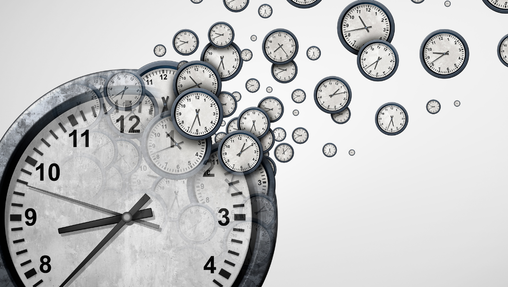

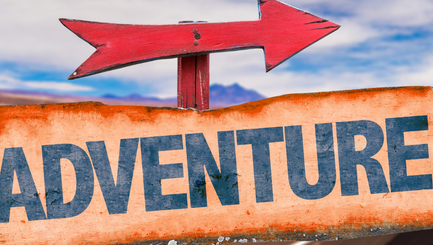





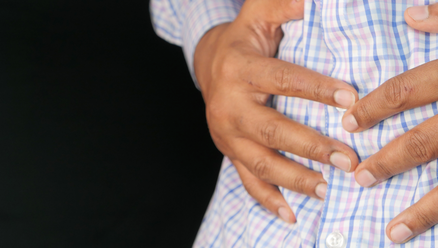
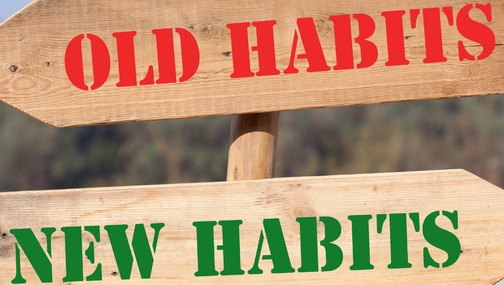

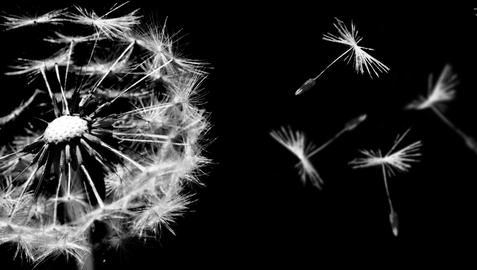






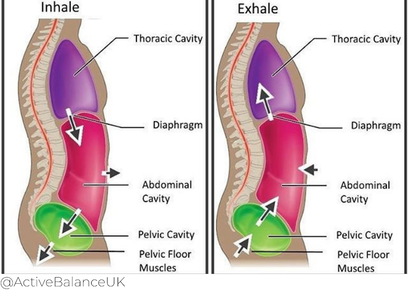


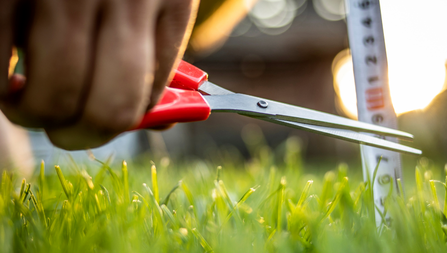


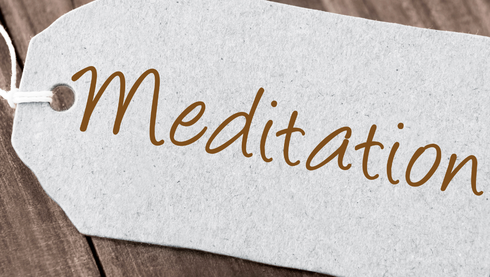




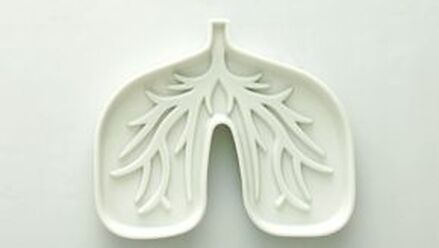

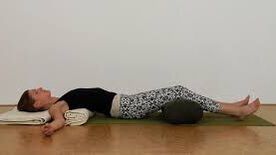
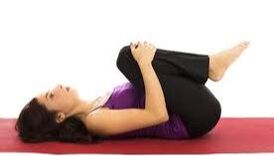
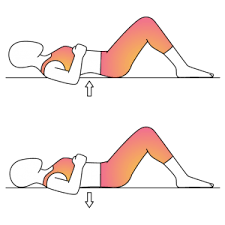
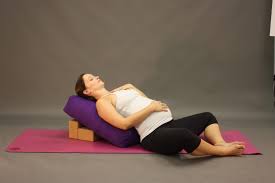
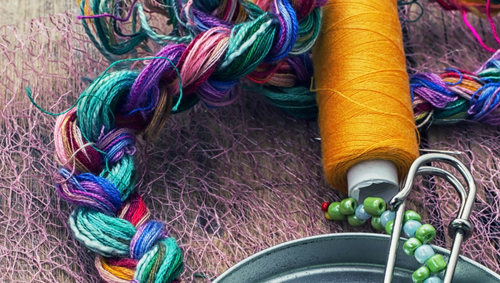




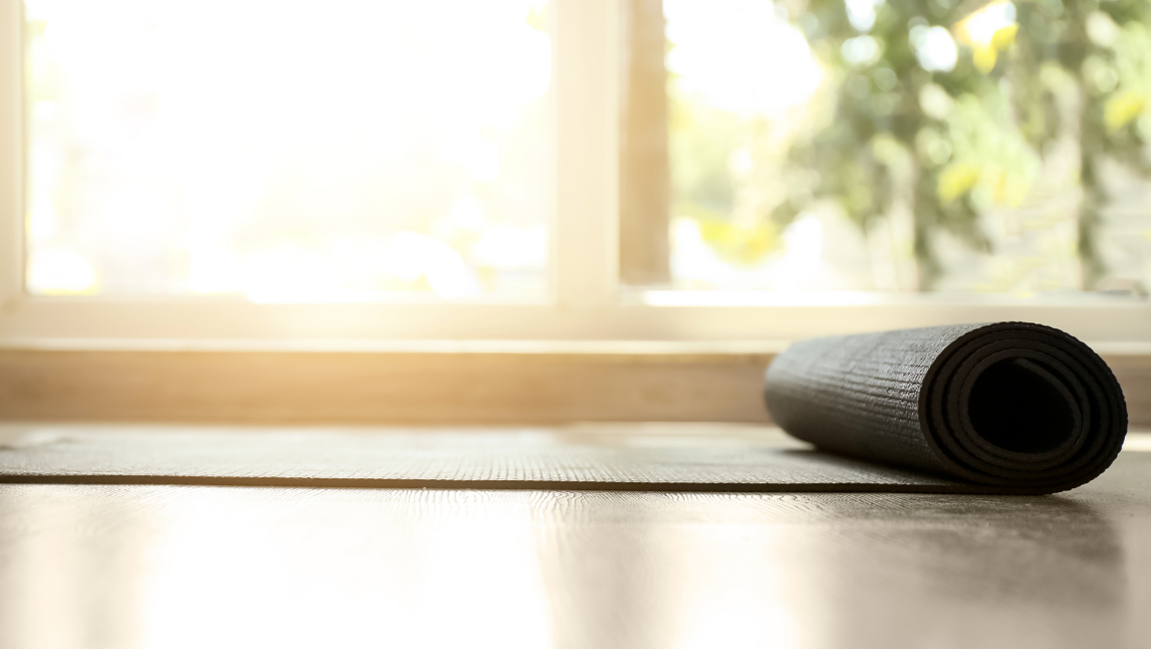

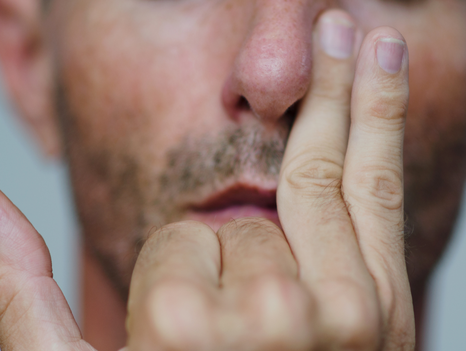

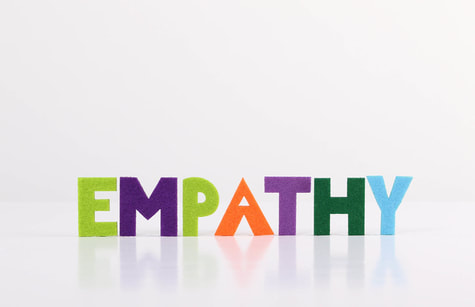





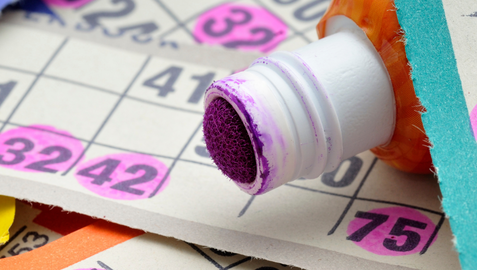



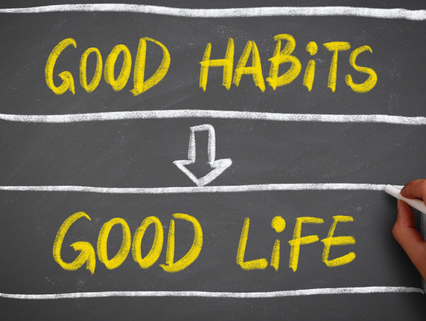



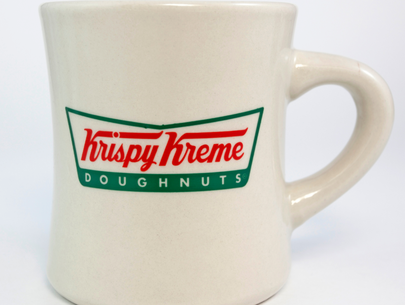

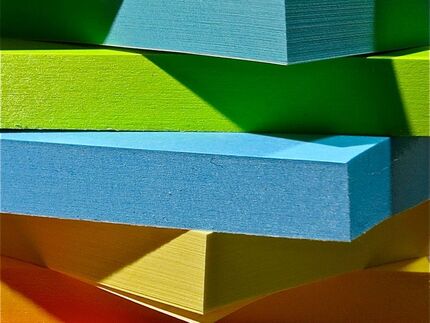




 RSS Feed
RSS Feed